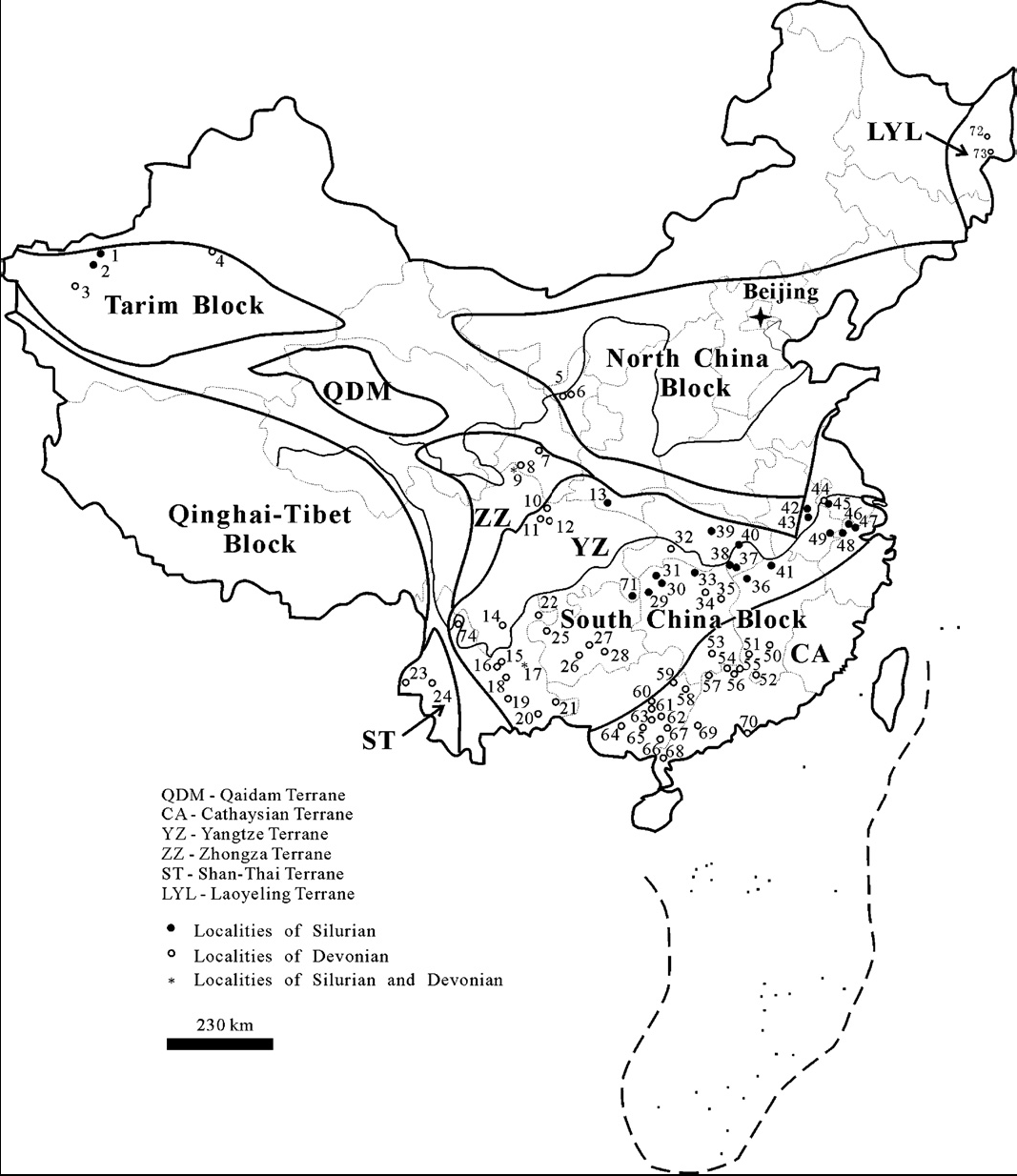| Location: Home > Research > Research Progress |
| Advances on Siluro-Devonian vertebrate biostratigraphy and biogeography of China |
|
(The tectonic units and the distribution of mid-Paleozoic vertebrate localities in China. Courtesy of Dr. Zhao and Zhu) China, with a continuous mid-Paleozoic sequence, is one of the most important areas for studying early vertebrates and related stratigraphy and biogeography. Since Mansuy reported Devonian fishes in China, early vertebrates have been found from over 70 sites, distributed mostly in the South China, North China, and Tarim blocks. Devonian fishes had been known from China since Mansuy reported the “ichthyodorulite” from Panxi (Po-Si), Huaning County, Yunnan. The Devonian vertebrates in China include all major groups of early vertebrates, and show the early diversification of some important vertebrate lineages, such as antiarchs and sarcopterygians. The research of Silurian fishes in China began with P’an. Recently, new fossil fish materials, including agnathans, placoderms, acanthodians, chondrichthyans, and osteichthyans, were collected from the Maoshan Formation of Changxing, Zhejiang, the Huixingshao Formation of northwestern Hunan, and the Kuanti Formation of Qujing, Yunnan, enriching the diversity of Silurian vertebrates and shedding new light on the correlation between marine and non-marine strata in China. The fish-bearing Silurian rocks are distributed mainly in South China and Northwest China, and belong to the unitedTarim-Yangtze Block. Six vertebrate faunas and 41 vertebrate assemblages are established for the Siluro-Devonian of China. 1. Xiaoxiyu Fauna 2. Xiaoxiang Fauna 3. Xitun Fauna 4. Jiucheng Fauna 5. Haikou Fauna 6. Zhongning Fauna Biogeographically, the three main Chinese blocks (South China, North China, and Tarim blocks) constitute the “Pan-Cathaysian Galeaspid Province” during the mid-Paleozoic with highly endemic vertebrate faunas. Some major groups of early vertebrates, such as galeaspids, placoderms, and sarcopterygians, apparently originated and diversified in China. Zhao and Zhu suggest that three dispersal routes of early vertebrates (Northern Route, Southern Route, and Circum-Panthalassic Ocean Route) bridged the Chinese blocks with the adjacent continents or blocks during the mid-Paleozoic.
|
